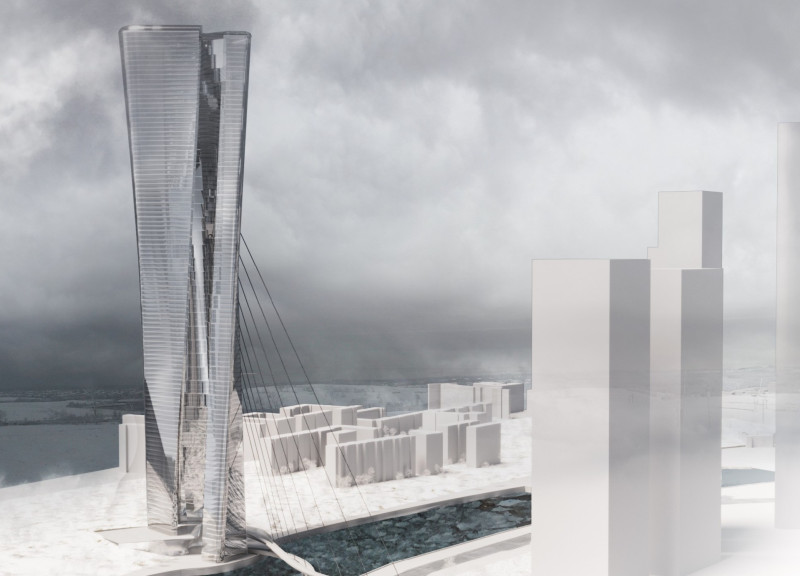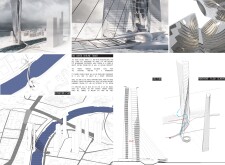5 key facts about this project
The Wired Skyline Tower will rise to a height of 420 meters, influencing the skyline of Moscow. Positioned to offer unobstructed views of the city and its range of skyscrapers, the design emphasizes modernity and a reflection of urban growth. It serves not only as a building but also as a representation of innovative architectural thought.
Structure and Form
The tower features a rounded shape that serves multiple purposes, especially in reducing wind impact. This architectural choice enhances the overall comfort for anyone within its confines. The flowing form acts as a visual anchor that suggests movement, making it a fitting addition to the ever-evolving landscape of the city.
Facade Design
A key feature of the design is its chrome-finished facade. This material choice creates a surface that is not transparent, allowing privacy for those inside while maintaining a modern aesthetic. The reflective quality of the facade interacts with light, providing a continuous dialogue with the surroundings and capturing the essence of the urban environment.
User Experience and Views
Inside, the tower is designed to maximize views of significant landmarks in Moscow, including areas like Moscow City and beyond. This focus on creating sightlines enhances the experience for residents and visitors alike. The layout promotes an open feel, contributing to a sense of welcome and integration with the cityscape outside.
Connectivity and Urban Integration
An important aspect of the project includes the two hanging bridges that connect the tower to Moscow City, effectively revamping the site of an old bridge. These bridges offer convenient access points, promoting foot traffic and easing movement between the tower and its neighboring areas. They serve both as practical walkways and as elements that enrich the architectural experience, bridging the past and the future.
The thoughtful design captures a blend of utility and modern aesthetics, allowing the tower to stand as a significant feature in Moscow’s urban context. The emphasis on connectivity and user experience provides a foundation for interaction within the city.



















































